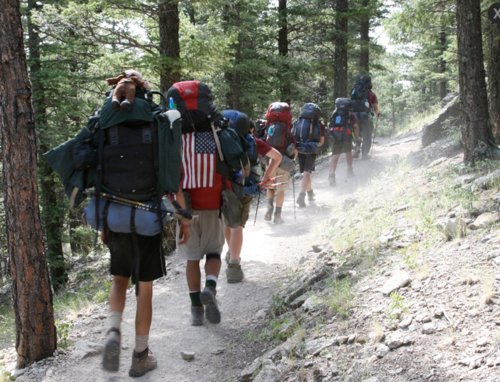First Class 4a.
Using a map and compass, complete an orienteering course that covers at least one mile and requires measuring the height and/or width of designated items (tree, tower, canyon, ditch, etc.).



First Class 4b.
Demonstrate how to use a handheld GPS unit, GPS app on a smartphone, or other electronic navigation system. Use GPS to find your current location, a destination of your choice, and the route you will take to get there. Follow that route to arrive at your destination.

The Global Positioning System (GPS) is a satellite-based navigation system made up of at least 24 satellites. GPS works in any weather conditions, anywhere in the world, 24 hours a day, with no subscription fees or setup charges. The U.S. Department of Defense (USDOD) originally put the satellites into orbit for military use, but they were made available for civilian use in the 1980s.
Second Class 3c.
Describe some hazards or injuries that you might encounter on your hike and what you can do to help prevent them.

Sun Burn
Prevention's
- Wear sunscreen
- Wear a hat to shield the sun from your face
Blisters
Prevention's
- Wear proper fitting shoes
- Wear synthetic socks
Bug Bites
Prevention's
- Wear bug spray
- Wear pants and have long sleeves
Poison Ivy
Prevention's
- Stay on the trail
- Leave No trace, don't touch plants you don't know
Exhaustion
Prevention's
- Bring a healthy meal, with water
- Take breaks
Dehydration
Prevention's
- Drink plenty of water
- Take off layers if you feel too hot
Second Class 3d.
Demonstrate how to find directions during the day and at night without using a compass or an electronic device.

-In the morning the sun is in the east and when it sets it is in the west the same goes for the moon
-With east and west found you can find North and South